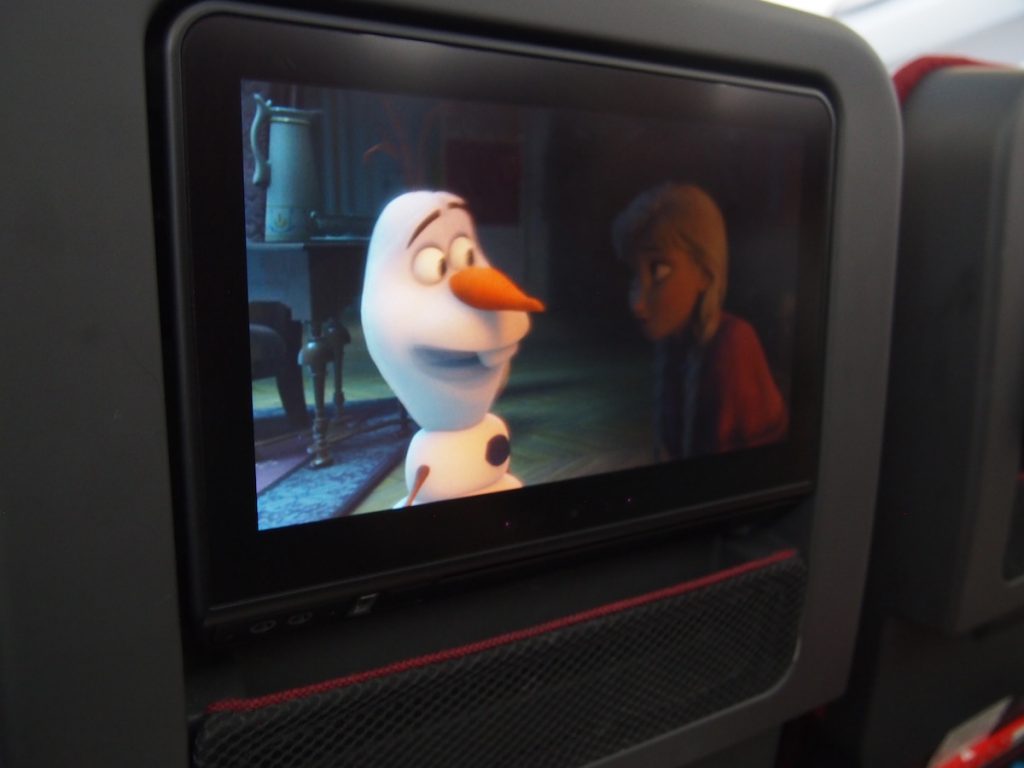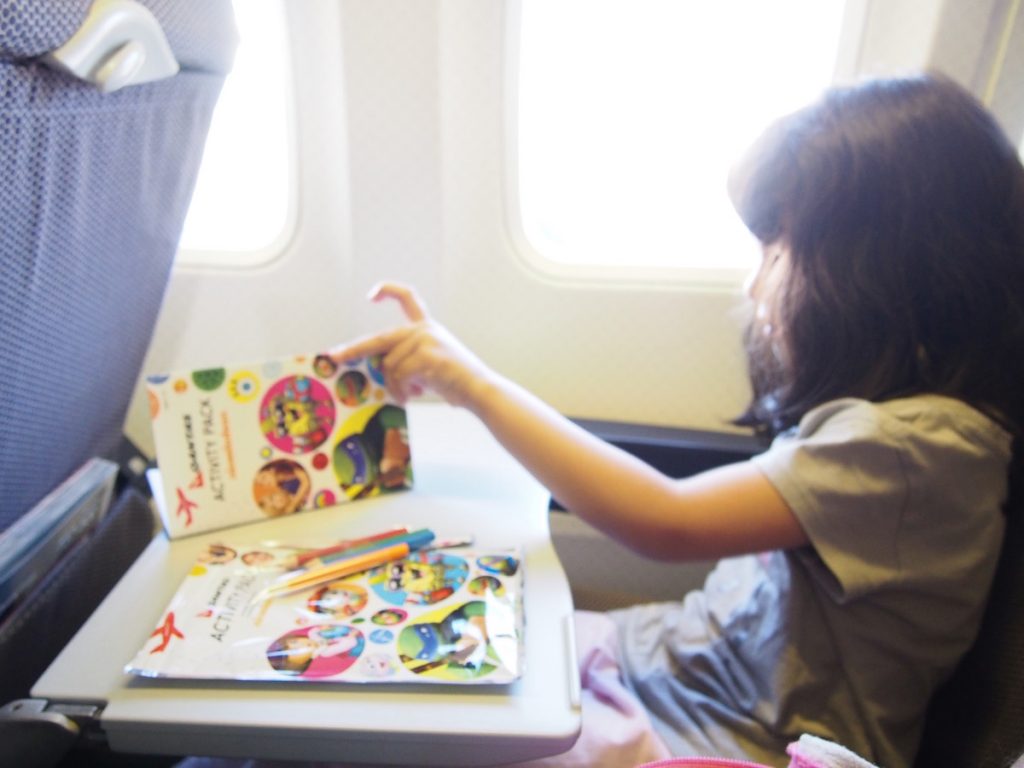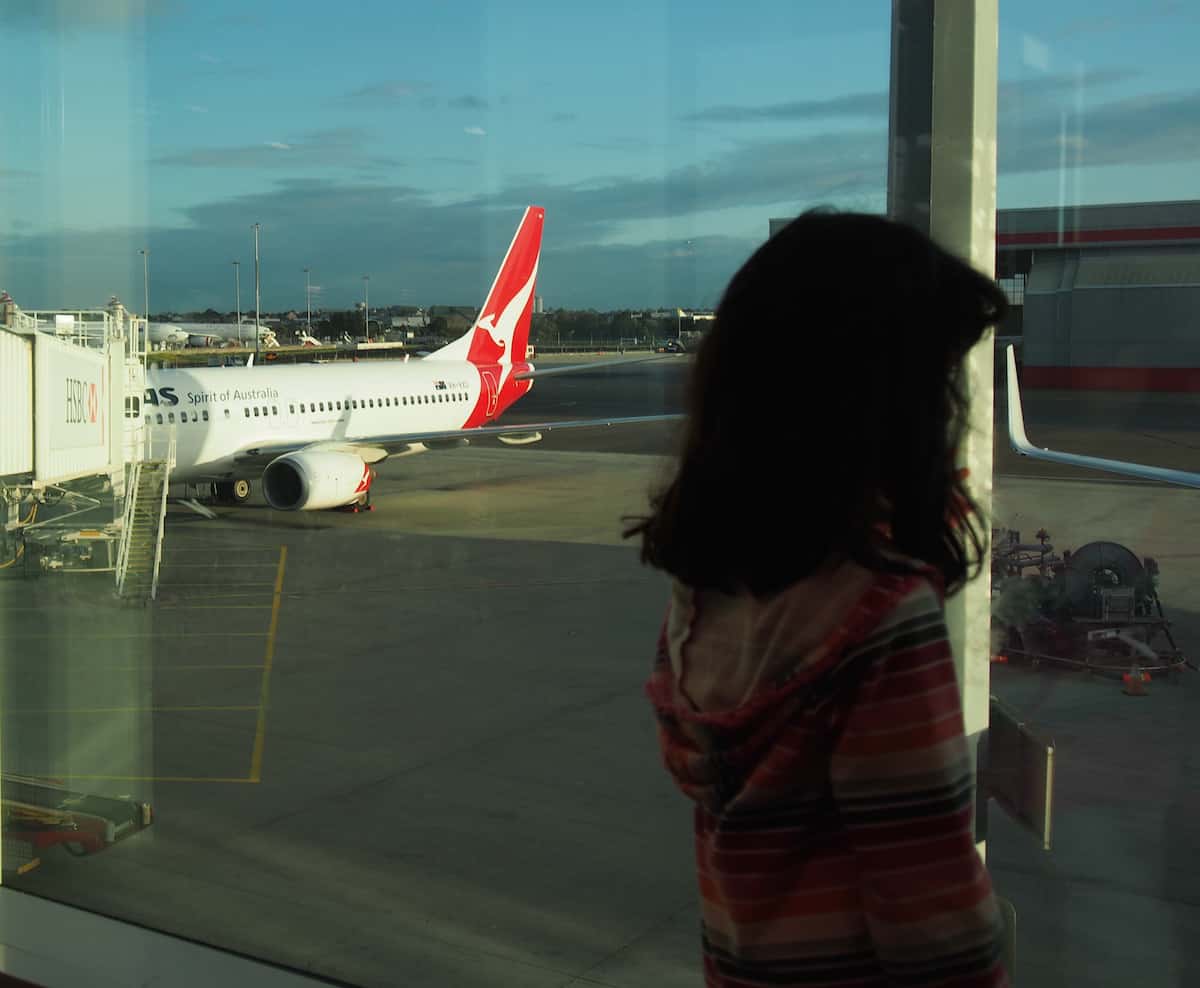If the thought of being stuck on a plane with your kids for hours on end instills fear, here’s some help. Before our recent long-haul flight with our five-year old daughter, I canvassed other mums and dads about their tips for flying with kids. A popular refrain was to prepare for the worst and hope for the best. They also provided me with some great advice which I have to share.

Before You Fly
- Fly a full-service airline if you can. With food, luggage allowance and entertainment included, it’s worth the extra money in my opinion.
- Try to choose a direct flight if you can to avoid multiple plane trips in one go or if you have the time, break up your journey overnight.
- Think about what might suit your children as to whether you should fly at night or in the day.If you can, coincide flights with nap times for babies and toddlers. On our holiday to Japan, we flew there during the day and flew back at night. Even though our daughter was occupied for most of the day flight, the night flight was definitely easier as she fell asleep almost immediately and woke up an hour before landing.
- Order a bassinet if needed. As there’s only so many bassinets on board, request this at time of booking. Keep in mind, the weight limitation of 11 kg for most airlines.
- Inquire about additional baggage allowance. On some airlines, infants get additional allowance. This is especially important when lugging all the additional paraphernalia that’s required when travelling with babies and young kids such as a stroller, collapsible cot or car seat.
- Use a baby carrier to carry babies during check-in, clearing security and boarding.
- If you plan to use a car seat in flight, need to reserve and purchase a separate seat and receive pre-approval for your device at least 24 hours before departure. You can also purchase a Child Aviation Restraint System (CARES) to use on board This harness style restraint device is suitable for children aged two to four years and is approved by the Civil Aviation Safety Authority of Australia.
- Include a medicine kit of baby Panadol or Nurofen, teething tablets and anything else you might need in flight in your carry-on.
- Pack anti-bacterial cloths to wipe down seat tray, seat belts, arm rest and anything else a teething baby might want to gnaw on.
- No matter how old your kids are, bring baby wipes in case of spills, cleaning grubby faces, washing hands before meals, etc.
- Request a special child, toddler or baby meal for all your flights and ensure that you include any allergies or special needs. They’re tasty, age-appropriate food that most importantly comes before everyone else’s.
- Prepare young children for the upcoming trip by playing with travel-related toys, using travel-themed printables for colouring or reading picture books. By familiarising kids with the travel experience such as going to the airport, lineup and boarding a plane, it will hopefully make the experience less overwhelming for kids.
- Sign up for Frequent Flyer program so that that the whole family can earn points. Programs like the Qantas Frequent Flyer Program lets you transfer points from different family members so you can redeem rewards faster.
The Day of The Flight
- Check your flight departure and check-in time to make sure it hasn’t changed.
- Dress babies and kids in layers of comfortable clothes that you can add or remove depending on the temperature. Bring a set of spare clothes for them and you in your carry-on.
- Get to the airport early to reduce stress. Everything takes longer with kids.
- Airports can be busy, crowded places and it’s easy to lose track of kids. Consider writing your mobile number on their arm or give them a whistle to blow in case they get lost.
- Pack snacks in case babies and kids get hungry and don’t like the food on board.
- Pack extra nappies and a portable change mat. Although airlines have nappies and baby wipes on board, supplied are limited. Also, think about using pull-up nappies which are much easier to get on.
- Keep kids occupied playing the app.
- If you’re lucky enough to have lounge access, get there early and enjoy it.
- Let kids burn off some energy before boarding. Lots of airports feature play areas for kids.
- Sometimes delays (and even cancellations) occur before boarding. Ensure that you have extra clothes, food and snacks and activities to keep kids occupied in case you need them.
Boarding and Up In The Air
- Flights often have priority boarding for those travelling with babies and young children. Board first so you have the opportunity to get yourself and your kids sorted with the necessary toys, games, entertainment and snacks without being rushed by other passengers.
- Earache is common during take off due to the change in air pressure. Provide a lolly for kids to chew or suck on. For babies, give them a dummy, teething toy or feed them.
- Turn on the in-flight entertainment system and show your kid how to use the controls. Most airlines have channels solely for kids entertainment. On some airlines, there’s a dedicated kids movies channel featuring 21 hours of content, that’s more than enough for even the longest flight. Our daughter happily watched Frozen over and over again before switching to the kids TV channel and watching Peppa Pig.

- Bring plenty to entertain kids just in case the entertainment system fails to work or you’re flying a no-frills airline. Tablets and iPads are good especially if you load them up with new apps and games before the flight. If you want some non-screen play, activities like colouring books, crayons, stickers and small books are good for younger kids. Make a game of it and give them a new item every couple of hours. Older kids might prefer new books or small portable games like Travel Scrabble or Battleship.
- Make sure kids have enough fluids as they can dehydrate in the dry air on board. Bring a non-spill sippy cup for younger kids to refill with water or juice.
- Bringing your child’s favourite soft toy will help your child feel more comfortable. Reading books and drawing is good entertainment that can easily be done on-board. Avoid bringing toys that have too many small pieces
- Take kids for a walk if they are starting to get restless. It can be hard for kids to remain in their seats especially if they’re toddlers. Take them for walks around the plane to the toilet or to see the galley.
- On a night flight, change your kid into pyjamas and pack a bedtime blanket and toy to make them more comfortable and amenable to sleep.
- Make friends with the flight attendants. We had amazing flight attendants on our last trip who passed out activity packs as soon as the flight commenced. They also checked in on us throughout the flight as well as other families to make sure that everything was fine with our children.

Disembarking From The Plane
- Let everyone else get off first so that you can make a relaxed exit with your kids and bags without rushing.
- If you’re travelling by yourself and need assistance, contact a flight attendant.
- Do a final check to make sure you have everything such as tablets, toys, books or other things that may have dropped under the seat or left in the seat pocket.
- If you can, pre-arrange transport (and carseats if required) from the airport to your accommodation ahead of time to reduce the stress in finding transport options at the airport.

